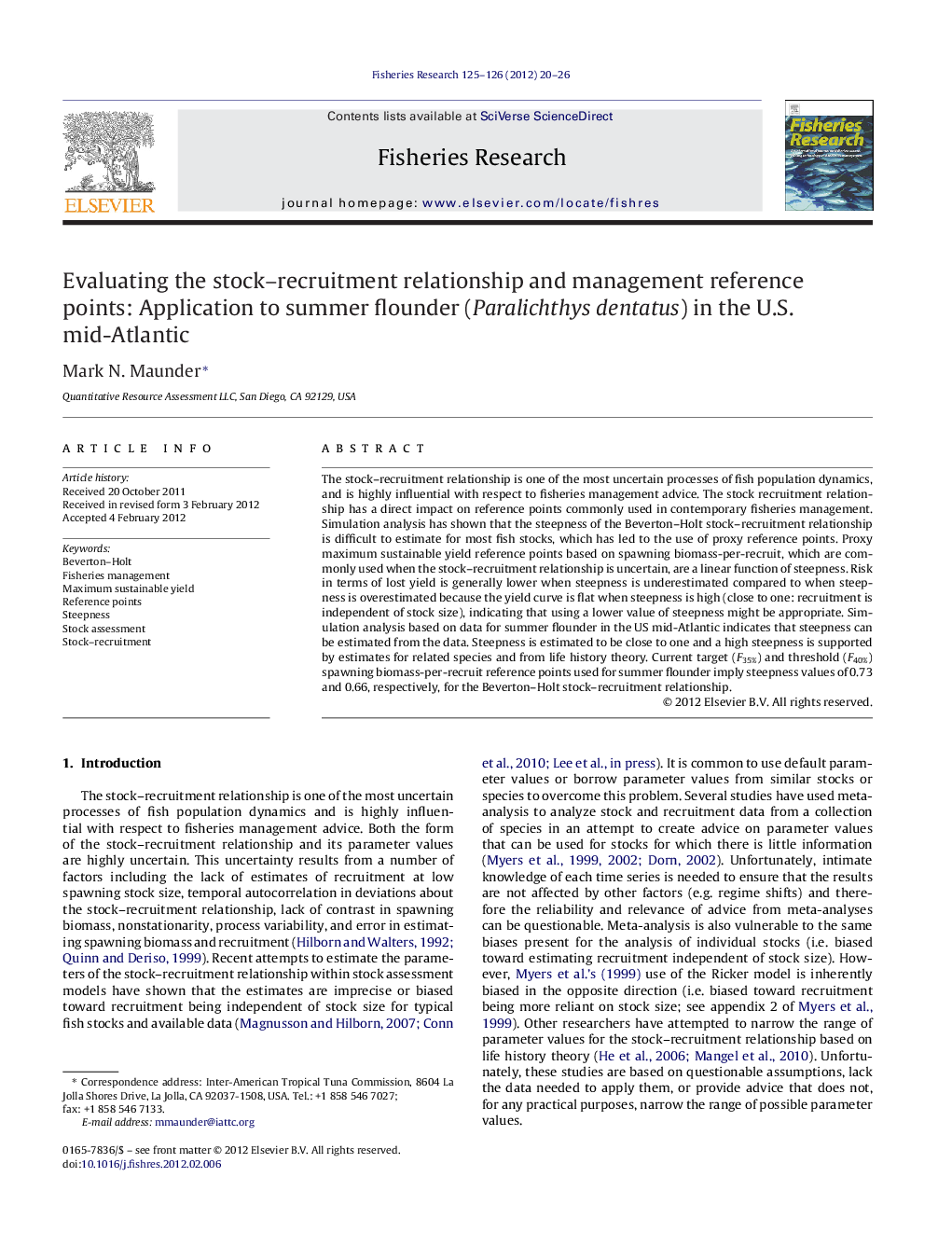| کد مقاله | کد نشریه | سال انتشار | مقاله انگلیسی | نسخه تمام متن |
|---|---|---|---|---|
| 4543408 | 1626836 | 2012 | 7 صفحه PDF | دانلود رایگان |

The stock–recruitment relationship is one of the most uncertain processes of fish population dynamics, and is highly influential with respect to fisheries management advice. The stock recruitment relationship has a direct impact on reference points commonly used in contemporary fisheries management. Simulation analysis has shown that the steepness of the Beverton–Holt stock–recruitment relationship is difficult to estimate for most fish stocks, which has led to the use of proxy reference points. Proxy maximum sustainable yield reference points based on spawning biomass-per-recruit, which are commonly used when the stock–recruitment relationship is uncertain, are a linear function of steepness. Risk in terms of lost yield is generally lower when steepness is underestimated compared to when steepness is overestimated because the yield curve is flat when steepness is high (close to one: recruitment is independent of stock size), indicating that using a lower value of steepness might be appropriate. Simulation analysis based on data for summer flounder in the US mid-Atlantic indicates that steepness can be estimated from the data. Steepness is estimated to be close to one and a high steepness is supported by estimates for related species and from life history theory. Current target (F35%) and threshold (F40%) spawning biomass-per-recruit reference points used for summer flounder imply steepness values of 0.73 and 0.66, respectively, for the Beverton–Holt stock–recruitment relationship.
► Reference points are highly dependent on the steepness of the stock–recruitment relationship.
► Steepness is difficult to estimate for most species, but estimable for summer flounder.
► Risk in terms of lost yield is generally lower for steepness underestimation compared to overestimation.
► Available evidence suggests steepness is high (recruitment insensitive to stock size) for summer flounder.
► Current spawning biomass-per-recruit reference points for summer flounder are too restrictive.
Journal: Fisheries Research - Volumes 125–126, August 2012, Pages 20–26